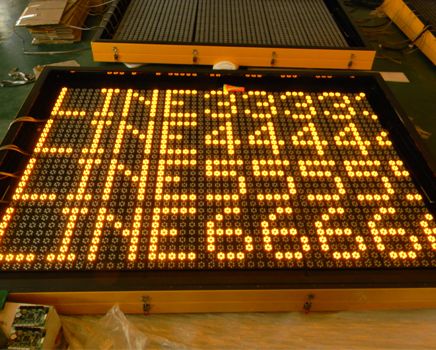There are several types of Variable Message Signs, commonly abbreviated as VMS, CMS, DMS, or matrix signs. If you’re unsure what these signs are, here’s a brief overview. VMS stands for variable message sign, and is also known as a matrix sign in the Melbourne. In short, a VMS changes its message to match the audience’s preferences. They can be placed in almost any location to make them as versatile as possible.
Another important function of variable message signs is traffic management. They can display real-time traffic conditions or ongoing construction to let drivers know what to expect. They can be used temporarily on construction zones or permanently installed along major roadways. They can also display message boards during national or provincial campaigns and can serve as an amber alert during rush hour. Because they can change messages on the fly, they are a great way to keep drivers informed while helping to control traffic flow.

The most basic VMS models can display up to three lines of information, although they can be larger than this. A movable VMS, on the other hand, can be used for ad hoc usage or temporary construction. These signs are also great for alerting foot traffic to upcoming conditions. However, the benefits of these signs go beyond just being convenient – they also have many other advantages. For one, they are highly flexible, so you can create a custom message that matches the environment or the surroundings.
Some of these signs are automated. You can schedule your messages to display in advance, depending on what the situation is. Another option is conditional messaging, which displays a message based on live inputs. Depending on the situation, this type of sign can respond to any sensor or data source. These signs can also react to tampering or low battery conditions. The possibilities for this technology are endless. With the right technology, they can even alert you to emergency situations that can affect traffic.
One type of changeable message sign is the dot matrix variety. There are three subgroups of dot-matrix variable message signs: full matrix, row matrix, and character matrix. Full matrix, on the other hand, has a large dot matrix display with a single wide text area. Full matrix VMSs have different font and graphics to choose from. These are the most common types of VMSs installed today.
While there are many benefits to these signs, a walk-in unit is an excellent choice for outdoor applications. Walk-in units do not require lane closures and allow for greater flexibility when setting up a display. Walk-in units are often installed overhead on freeways or other public areas. In addition to their durability, these signs are designed for easy integration with UTMC management systems. So whether you’re looking for outdoor signage or indoor advertising, they can help your business reach the next level.
While variable message signs display information in three-line blocks, they are designed to scroll through longer messages. Each three-line section of a message appears for five seconds before it switches. Longer messages run on a continuous loop, giving drivers ample time to read the message before they move on. They are especially helpful when placed at intersections or on highways, where the information needs to be read in the shortest amount of time.
